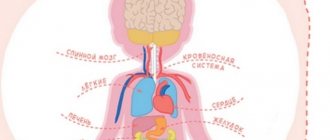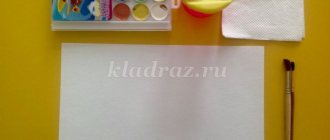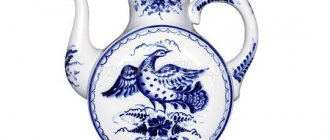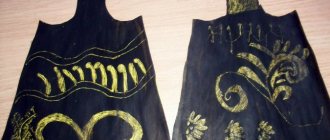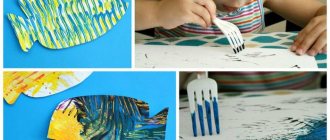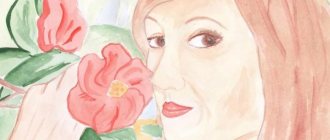Abstract of the GCD Topic: “Children doing exercises” outline of a drawing lesson (senior group)
Goal: to train children in drawing a human figure in motion. Tasks:
Educational: To develop children’s ability to determine and convey the relative size of body parts, the general structure of the human figure, and changes in the position of the hands during physical exercises.
Developmental: consolidate the methods of making a sketch with a simple pencil, followed by coloring with colored pencils; develop independence, creativity, the ability to talk about your own drawings and the drawings of peers
Educational: arouse interest in sports; to form in children the desire to complete the work they start.
Drawing in the senior group “Children doing exercises”
Valentina Podshivailova
Drawing in the senior group “Children doing exercises”
Summary of organized educational activities “Artistic Creativity”
.
Drawing in the senior group “ Children doing exercises ”
Integration: "Communication"
,
“Physical education”
,
“Music”
,
“Socialization”
Types of children's activities: productive, communicative.
Purpose: to train children in drawing a human figure in motion.
- consolidate the methods of making a sketch with a simple pencil, followed by painting with colored pencils;
- arouse interest in sports;
- develop fine motor skills;
- to form in children the desire to complete the work they start.
Lesson Objectives
When working with children, it is important to complete the tasks below. They can be divided into several groups
Developmental and educational
The following software tasks must be completed:
Children are taught to draw human figures, paying attention to the proportionality of various parts of the human body. Before drawing, they are taught to create a model of body position using stick figures. They tell you how to use it. Children are taught fine arts, the ability to express themselves in a drawing. They try to interest kids in playing sports, to show that it is useful and interesting.. FEMP classes in the 2nd junior group according to Pomoraeva and Pozina
FEMP classes in the 2nd junior group according to Pomoraeva and Pozina
They also face the following speech correction tasks:
- Using the example of physical exercises and the names of various parts of the body, children's vocabulary is developed.
- They teach kids the correct use of suffixes for diminutive names.
- The teacher, controlling sound pronunciation, teaches how to pronounce words correctly.
Note! Additionally, the problem of developing children’s fine motor skills is solved.
Drawing in the senior group on the topic “Children doing exercises”
Artistic and aesthetic development
– drawing (03/02/2021) Educator: Savchuk E.A.
Subject:
“Children doing exercises” Komarova, 82
Target
: master the basics of drawing the movements of the human body.
Priority educational area
: artistic and aesthetic development in the integration of educational areas: “physical development”, “speech development”.
Technologies, methods, techniques:
“Morning of joyful meetings”, the theory of the development of cognitive interest (the interest of the teacher himself, the active use of accumulated knowledge, the optimal combination of group and individual forms); theory of developmental learning (independent mental activity)
Material/literature
: album sheets, a simple pencil, colored pencils, audio recordings of songs for exercises.
Preliminary work
: conversation about a healthy lifestyle, why it is useful to do exercises; make moving people from counting sticks.
— Development of the ability to depict human figures, paying attention to the proportionality of various parts of the human body.
- the ability to express yourself in a drawing
—
Development of children's visual creativity.
—
Strengthening children's ability to place images on a sheet of paper and draw large.
- fostering a love for sports, showing that it is useful and interesting.
Set-up for the lesson:
Place your palms on your chest, where your heart is. Listen to how it beats. Feel and imagine how your palms are filled with the warmth and kindness of your heart. Now share the warmth and kindness of your heart with each other, holding hands. Smile at each other. In such a good mood, let's go to the tables.
People from fairyland love to do gymnastics and exercises. And they have many of their favorite exercises. These fabulous little people really want to get to know your favorite exercises.
- Shall we help them? But how to do this?
I think I came up with an idea, let’s draw how we do exercises, but let everyone draw their own exercise.
They bent their arms to the side, raised them up, waved,
They hid them behind their backs. Looked over your right shoulder,
Through the left one more. We sat down together,
They touched their heels, rose up on their toes, and lowered their hands down.
Independent work of children
First, sketch your drawing with a simple pencil, then start coloring with colored pencils.
(During the drawing process, the teacher provides individual assistance and monitors posture)
So we have seen what exercises each of you likes.
I really liked your drawings, you know a lot of physical exercises. Don't forget to do them every day and you will be strong, agile, fast!
Didn't find what you were looking for?
You might be interested in these courses:
Drawing on the theme “Children doing exercises”
Post Content
classes in the section
“Artistic and aesthetic development” (drawing)
for children with mental retardation
senior and preparatory groups
Topic: “Children doing exercises”
Educator: Mukhametdinova A.Ya.
Target:
Exercise children in drawing a human figure in motion.
• consolidate the methods of making a sketch with a simple pencil and then painting it over with colored pencils;
• arouse interest in sports;
• develop fine motor skills;
• to form in children the desire to complete the work they start.
Handout:
album sheets, simple pencils, colored pencils, cards with drawn silhouettes of people, counting sticks, a tablet, pictures of a person in different sports poses, a model of a human figure with moving limbs.
Progress of organized educational activities:
Educator:
- Guys! We have guests today. Say hello to them, smile at each other, at the guests, and wish everyone a good mood.
Today we will listen, think and talk, play, draw. Let's take our seats.
- I want to tell an interesting tale about the stick man, he had a round head, and his torso, arms and legs were made of sticks.
One day while playing, he fell and crumbled. He was so weak, he fell and immediately crumbled.
Here you are so cheerful and strong, brave and dexterous. Tell me your secret, what helps you to be like this (children's answers).
- That's right, physical education, hardening, games for a walk, classes in the pool, etc.
- Guys, let's try to collect our stick men. We have a head, a torso, arms, legs.
- Who can tell me where we start? (children's answers). That's right, let's start with the head.
-Where should we place the head? (children's answers). That's right, upstairs.
-Where should we put the body? (children's answers). Right in the middle.
-Where should we put our hands? (children's answers). Let's put our hands left and right.
-Where should we place our legs? (children's answers). That's right, feet down. Well done.
- Let's repeat the exercise with our stick people so that they become stronger. I will give everyone a drawing, and you repeat it with your stick people.
Children perform movements using figures.
— Stick men live not only in fairy tales, now I’ll show you where else stick men are used (children are shown traffic signs).
- Who can tell me what these drawings are called? (Children's answers).
— That's right, these are traffic signs.
Jerking up and down with our arms, as if we were waving flags. Let's stretch our shoulders. Hands move towards. Hands on hips. Smile.
Lean left and right. Start squats. Don't rush, don't lag behind.
And at the end - walking in place, one, two, three, four, five. We all had time to warm up and sat down again.
“Guys, we taught the stick men how to do exercises, and we did some physical education ourselves.” So that they remember these movements and do exercises every day, what can be done? (children's answers). That's right, draw.
- Let's repeat the body parts again, otherwise I already forgot (head, torso, neck, 2 arms, 2 legs).
- Where should we start drawing? (from the head)
— That’s right, if you can’t draw a circle evenly, you can use a stencil.
— What will we draw next (torso)
— What will we draw at the next stage? (arms and legs)
— What do you need to remember so that the depicted figure turns out correct? (legs are the same length as the body). The arms and legs are thinner than the body. The hands reach the middle of the thighs and end in palms. Elbows at waist level.
— Guys, what did you pay attention to when you controlled the figures? What parts are movable (arms and legs consist of 2 parts, so they bend easily: arms at the elbows, legs at the knees).
— We start drawing first with a simple pencil, so that we can correct it, do not press too hard with the pencil.
- Don’t forget to finish drawing the clothes, and on the head there are eyes, nose, ears, hair.
- Great, before we start drawing, we need to do some exercise for our eyes.
Gymnastics for the eyes “Be healthy”
(Children perform eye movements)
- Well done, we did some exercises for the eyes, now we can draw real athletes. Let each of you draw little people doing your favorite exercise.
Source
Notes on drawing “Children doing exercises”
Irina Mulyukova
Notes on drawing “Children doing exercises”
Targets: The child has a developed imagination, which is realized in various types of activities; The child has developed gross and fine motor skills
Educational: To create a desire for a healthy lifestyle, to arouse interest in playing sports
Developmental: Develop a sense of color, the ability to create a composition, develop fine motor skills
Educational: To promote the development of children’s ability to depict a person, conveying in the drawing the general structure of the figure, the change in the position of the hands during physical exercises. Reinforce drawing and painting .
Speech: Activate children's vocabulary
Material and equipment:
Preliminary work: Conversations about a healthy lifestyle, looking at illustrations
Contents of organized educational activities:
1 Organizational point:
All the children gathered in a circle , I am your friend and you are my friend.
Let's hold hands together and smile at each other!
2 creation of a problem situation, motivation
— Guys, do you know what you need to do every morning in order to be healthy? (children's answers)
Why do you need
to do morning exercises ? (to be hardy, strong, healthy, skillful)
Imagine that somewhere far, far away there is a country in which children do not know how to do exercises . How could you help those children, but they and you don’t know how to write and read? We need to draw how we perform the exercises.
3 Familiarization with new material, solving a problem situation
Let's see what the person in the picture will look like? What do you need to know to draw a person ? (need to know body parts)
Name them.
Where should we start drawing ? (from the head)
- accompanied by a display on an easel.
What will we draw next? (neck and torso)
.
What do you need to know when drawing these body parts ? (the neck connects the head and torso)
What should we draw for later?
(legs and arms)
On the topic: methodological developments, presentations and notes
To consolidate children's knowledge about the troubles and grief brought by wars. To form patriotic feelings and interest in history.
To develop cooperation skills between children and parents; To involve parents in participating in the life of the group and kindergarten through the search and implementation of the most effective forms of work; To increase the level of parenting knowledge.
Summary of a drawing lesson in the senior group on the topic: “Children doing exercises.” Integration: “Communication”, “Physical education”, “Socialization” View.
Creating a collective plot composition, children learn to analyze the features of the image of a person in motion, correlate parts by size and proportions; develop skills in working with plasticine.
Source
